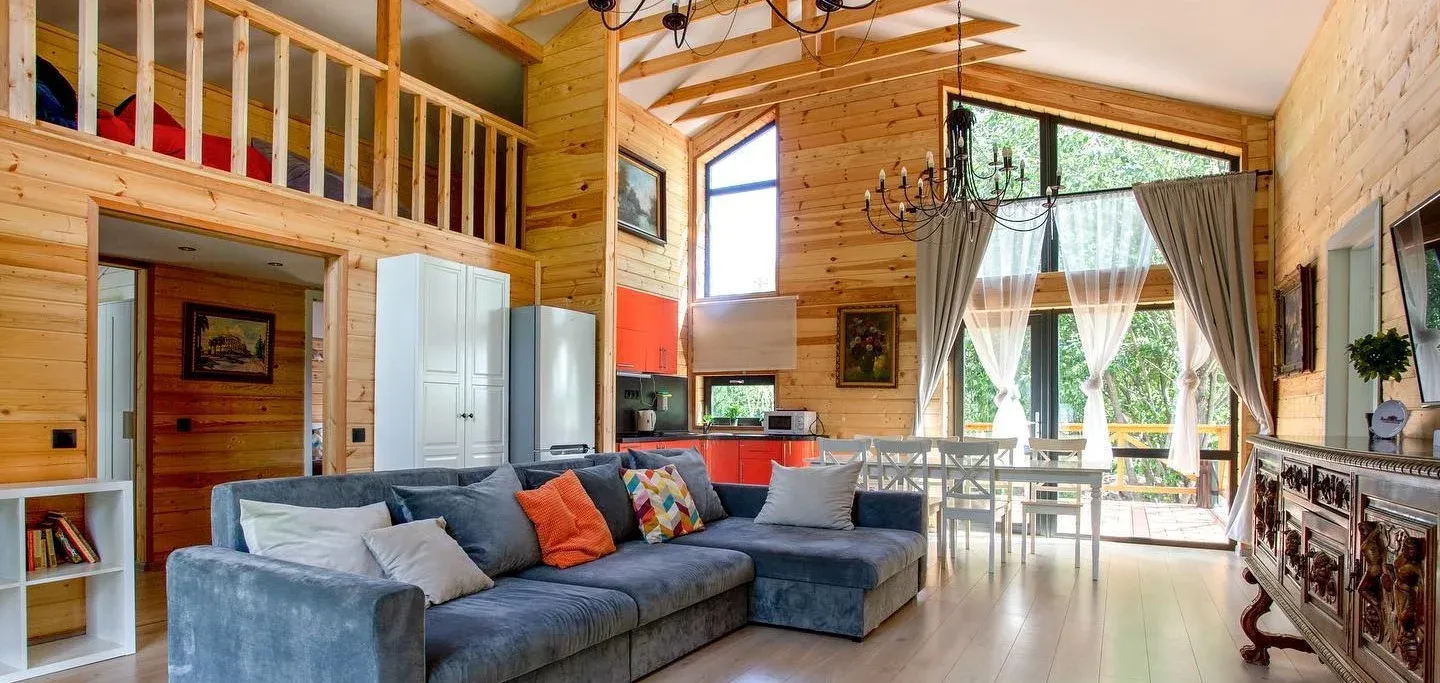
The restoration of noble estates in Russia has been going on for many years. Even in the days of Tsarist Russia, not all estates were profitable, but today it takes even more entrepreneurial talent to be financially successful. We will tell you how these privately funded estates are turning a profit for their new owners.
Stepanovskoye-Volosovo, Tver Region

Stepanovskoye-Volosovo
Sergei Vasiliev, co-owner of the Russian Funds investment group, bought the abandoned estate of the Kurakin princes. The Kurakins had a total of six estates from St Petersburg to Penza province. Stepanovskoye-Volosovo is considered to be one of the largest.
The businessman restored the estate with his own money. The buildings were fully renovated, the appropriate furniture, collections of paintings and interior decorations were purchased — recreating the atmosphere of the 19th-century aristocratic estate has become a separate project. Vasiliev does not reveal the budget.
A small inn has been built on the estate, and a mini-hotel is in the pipeline. Excursions are the main source of income, and they cost 450 roubles per person. Tours are organised twice a week, and if you are lucky, you will be taken on a personal tour of the restored noble nest by Sergey Vasiliev — his family lives in the outbuilding of the main manor house. You can also wander around the park for free.
Skorniakovo-Arkhangelskoye, Lipetsk Region

Skorniakovo-Arkhangelskoye
Lipetsk Region is one of the richest regions for manor houses. Skorniakovo-Arkhangelskoye, on the banks of the Don River, dates back to the 18th century and has changed hands six times since then. The last was a young businessman, Alexey Shkrapkin, who took over the estate in 2006 when it was practically in ruins.
A major reconstruction and restoration project was launched in 2010, at a cost of 200 million roubles. Now the estate has a full-fledged complex for rural tourism, MICE events, celebrations and excursions. The property has an equestrian complex, a restaurant and lodges for accommodation.
In 2022, Shkrapkin’s representatives stated that the investor had already managed to return part of the money invested in the restoration of Skornyakov-Arkhangelsky and used it to buy another estate in the Lipetsk region, in the village of Repets.

Skorniakovo-Arkhangelskoye


Grebnevo, Fryazino

Grebnevo
Grebnevo is one of the charitable projects of businessman Andrey Kovalev, once known as the leader of the rock group Pilgrim and now the owner of the development company Ekoofis.
Ivan Kalita, Princes Trubetskiye and Golitsyns are among the former owners of the estate.
Restoration of the estate will begin in 2021. The budget has not been disclosed. The works are planned to be finished in 2026, but the object is already open to visitors. Two wings and the triumphal arch have been restored, and the equestrian and carriage yard is being rebuilt.
The estate effectively combines a glamping and a modular hotel. A number of modern lodges have been built to accommodate guests, away from the main complex of ancient buildings. The lodges can be rented for between 4,000 and 39,000 roubles per day. A large restaurant is also available for guests.
Andrey Kovalev has already shared his plans to turn the estate into a cultural, educational and educational cluster. He also plans to open a museum here.

Grebnevo




Leontiev Estate, Rostov Veliky

Leontiev Estate
This estate is one of the largest projects for the restoration of the architectural heritage of the nobility.
The estate of the Leontievs in the village of Voronino was bought by the descendants of this ancient family. The purchase price was a relatively modest 50 thousand dollars. The restoration took 10 years and the costs are not known.
The main income of the estate comes from the reception of organised tourist groups, which visit Rostov in large numbers. The city is only 20 kilometres from Voronin. Tourists are received in the main house, where the museum is open.
Two guest houses have also been built on the estate to accommodate visitors, and programmes and entertainment have been developed: balls, horse riding, greyhound racing, boating on the greenhouse ponds — in short, pleasant and relaxing pastoral tourism for modest sums of money. The owners have said in interviews that they manage to operate profitably for four or five months of the year.

Leontiev Estate
Pleshanov Manor, Rostov Veliky

Pleshanov Manor
Unlike the Leontiev estate, Pleshanovskaya is located in the centre of Rostov Veliky, a 10-minute walk from the local Kremlin. This location is certainly advantageous to the owners: the estate is often cited as an example of the most efficient use of aristocratic heritage.
The Pleshanov estate is a complex of buildings owned by Moscow hotelier Ivan Sinyushkin. The businessman bought the first building, which belonged to a wealthy merchant and of which only the walls remained at the time of purchase, in 2001 for 60 thousand roubles. After restoration, a small museum was opened there with historical exhibits, works by craftsmen from the villages of the Yaroslavl region and much more. A total of 8 million roubles was invested in the project.
And in 2003, a hotel opened in the same building. The venture proved so profitable that two years later Sinyushkin bought a neighbouring building, and then two more. In total, the entrepreneur has invested 40 million roubles in the property over 10 years.
The complex now houses a restaurant, a tourist office and craft workshops. The entrepreneur, who has long since become a local celebrity, plans to expand his activities further.
Photo: Pukhov K— Shutterstock.com; усадьба Скорняково-Архангельское (4); усадьба Гребнево (5); Усадьба Леонтьевых (2); Wildolga CC BY-SA 4.0 — Wikimedia Commons






